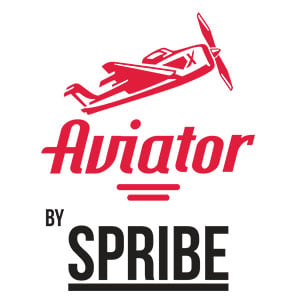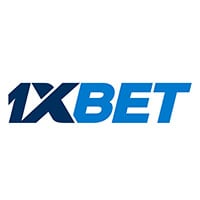Please explain what Total Performance Data does.
I founded Total Performance Data three years ago, to try and create new content and data for horse racing, using our own hardware and technology to tell more stories about how a race is run. There has been a lack of innovation in horse racing in the last decade, so it has a lot to gain from some technological advancements.
How did you arrive at the idea for the company?
I was in financial technology, but I was working four days a week from 2012 onwards setting up this company with a couple of guys who owned horses and a horse racing yard. The idea we had was to marry the two, creating a data and technology business in a market which lacks transparency and data, with my knowledge of horse racing as somebody who, foolishly but joyously, has had a share in a race horse with friends every year since my mother gave me a share for my 21st birthday. It left me rather overdrawn at university with the training fees, but it was a nice statement! It’s marrying data and technology with an implicit understanding of what kind of data would make horse racing more interesting and sellable.
What is the key information that TPD’s horse racing trackers pick up?
When we began life, our technology partners had the ability to cover heart rate, stride length and positioning all in one device. We have stripped it back to create a race positioning system which focuses on providing a very low latency live data feed of X and Y positions of where a horse is as many times a second as you want. From that, all sorts of derivative data can be created around speed, acceleration and deceleration, to drive in-running betting and broadcast enhancements. In its rawest form it is positioning data, per horse, taken from satellites.
How difficult has the development process proved?
The reason this information didn’t exist was because there was a technology barrier, which we had to overcome, in order to make a system sufficiently affordable and portable so that cost wasn’t a barrier. We chose technology partners we felt most able to get over that barrier with a low cost high accuracy system, and it’s taken us nearly two years of R&D to get to the point at which, in December 2015, we went live at our first race course, Lingfield Park. Now we’re on the verge of going global.
What kind of feedback and interest have you had from the racing industry?
Our first deal was with Arena Racing Company, which owns and operates 40% of the UK racing fixture list, and their TV pictures and form website is run through At The Races, which is their media partner. The information is viewable after the race on attheraces.com, with nice, interesting speed graphs and eye-catching MPH speeds – interesting new content to attract a younger audience. What we have with Arena Racing Company is very much a partnership.
The racecourses are very keen to offer this kind of information for the race goer and the trainer, for regulatory purposes – there are so many different applications, and everyone involved in horse racing, including betting companies, stands to benefit from the greater transparency this data provides. It’s all about who can come to them with a proposition which is commercially viable. That is where we have come in. We have cracked the technology problem, and brought it forward in a manner that is a no-brainer offering for race courses. They are keen, but they have a limited budget, so we have had to come with a business plan as well as technology. We feel we’ve innovated very heavily in providing a deal that can go straight from nothing to 40% of the UK fixture list.
The reason that there is so much talk of innovation in sport with so little delivered, is because it is difficult for innovations to transition from ‘nice to have’ to ‘must have’What implications do you see the product having for betting markets?
We’re looking to provide information that will stabilise, and in time increase horse racing’s share of the sports betting market. Horse racing is trying to say to punters: “Bet on us, because we have some exciting thrills to offer you, to match the data offered in other sports.” In tennis, you can measure serve speed for example, while in golf you have Hawkeye for the line of the ball. Are these encouraging bets? They are certainly encouraging broadcast enhancement, and when people are watching sport they like to have a bet on it. A more appealing broadcast can drive betting turnover. Step one is to put some real data on racing broadcasts, which makes anybody watching racing become more interested in what’s going on.
There is a lot of racing code and jargon – every sport has its jargon, but this is especially true for racing, and it is an issue in terms of putting off the more casual viewer. If you put up numbers, everyone can understand which horse accelerated the most at a certain point, for example, providing information a new viewer can get to grips with. Then you have the impact on new betting markets.
What developments will the product have in terms of these new betting markets?
The most immediately obvious is in-running odds. In-play football bets make up 80% of the football betting market. I don’t think horse racing will ever get there, but it could develop significantly with this technology. The only venue where you can currently bet in-play is the Betfair exchange, and it has become the domain of professional gambling types.
More live markets are required for horse racing for those that fancy a quick bet – it’s no good telling them on the mobile app that the race is off, and they have to wait five or ten minutes to place a bet. Horse racing is global and around-the-clock now, particularly with US racing coming in overnight, but we can still increase that by having a longer window for each of those races, not just in the lead up to the start but until it finishes.
How have you been getting the product out there?
We’re on enough race courses to have meaningful data coverage; the product is now live on five UK all-weather courses so we are doing mostly UK racing today. We’ve got more content this year around the world, that we have contracts for. Third-parties are now working on this live data that we are producing, the in-running product is a couple of months away from being ready for an operator, in the beta testing phase. We’re not in flat-out sales mode, but sales is just starting to cross over with product development.
What are the biggest challenges that you have faced in getting Total Performance Data to this point?
We have solved the technology challenge. A challenge for us now is patience. In sport, things move at a slightly slower speed than in financial technology. The reason that there is so much talk of innovation in sport with so little delivered, is because it is difficult for innovations to transition from "nice to have" to "must have". Fundamentally, those sports still have to be staged, day-in and day-out. Racing has a huge volume. There are now 1,400 fixtures a year. In the US, there are 50,000 races a year. The show has to go on. It’s like mending the escalators at Tottenham Court Road – if you close the station, you can fix it in two days, but you have to have one close and the other operating, as people need to keep moving through the station .You have to innovate while planning around the safe and regulated continuation of the sport.
What plans do you have regarding the future development of the technology?
We would like the position and speed of the horse to be just the beginning. Measuring stride length and pattern is capability that our current technology is able to account for, but it’s a case of making some refinements, and broadcasting it live will be really interesting, allowing people to see data such as average number of strides per furlong, and how much time a horse’s feet were on the floor for. Financial analysis requires a computer to account for thousands of data points at any one time, and it is the same with our biometric data. It’s only when you put stride length in the context of speed and heart rate that you then might get closer to beating the bookie, and the bookie will also benefit as they have more information with which to set the price. And who knows what kind of innovations will come from this biometric data? We provide it to operators, and once they have access to it there are any numbers of possibilities as to where they can take and develop it.
Micro-markets can be formed around this data – why not take bets on the first horse to the first bend, or which horse achieved the highest top speed in a race – our job is to make the technology accurate enough to support that, but such developments are very exciting. There are generally more than 500 markets on a football match, but horse racing has one – starting price. Let’s bring in micro-markets. We of course have to be cognisant of incidents like the recent scandals in tennis, but let’s not allow one or two bad apples to disrupt the overall spirit of innovation here.
To what extent would you say operators and the racing industry need to implement this technology, in order to remain appealing to punters? Could it be left behind if new markets are not introduced?
Operators are very keen to offer markets-based on this data, and racing is keen to show it. Horse racing needs to up its game in terms of the data its offering, in order to maintain its share of sports betting – end of story. It knows that, but operators now have so many sports available to them that they do not have vested interest in which ones they offer. In the last few years they have become less reliant on racing, not because they are deliberately trying to reduce horse racing, but because they are being offered lots more content by clever rights holders. Horse racing has got to face facts, and embrace that. In order to maintain its share of turnover, it’s going to have to compete with these other sports, which will require some innovation.
What potential does VR and AR hold for your technology?
We think that racing has got a chance to leapfrog other sports on the VR and AR stage, because we’ve got a half tonne beast to carry a sensor that can be on it, collecting live data during a race. With footballers, there are issues with them reporting their data live during a game. Commercial and data rights are a minefield – one of the issues that held up Jose Mourinho taking the Manchester United job was that Chelsea owned his name. In racing, we have greater understanding and clarity in terms of how the revenue streams flow when a horse runs, and are just trying to create a bigger revenue stream.
One way of doing this could be offering on-horse views using augmented reality. We did a pilot with William Hill in 2015 and will be offering the world’s first live AR betting race this Easter. You’ll be able to be on board the horse you have had a bet on or are interested in through the bookmaker’s app in Oculus Rift or Google Cardboard. In short, it’s extremely cool. Our positioning data is crucial in telling the computer where to show the horses in relation to each other. I say Augmented Reality, and not Virtual Reality, because it’s a real race, and the visual experience is powered by real positioning data. It can be used in the stands, at home, and in a bookmaking shop to provide a truly immersive betting experience. Horse racing has everything lined up to be the first sport to offer AR live, and it must seize the opportunity.
Could the triennial review and its implications for betting shops and advertising restrict the technology’s potential?
I don’t know that advertising drives betting in racing as much as it does in football, because it’s not so in-play at the moment. On the triennial review, we could talk for several days about the regulatory backdrop here, and the future of the bookmaking shop is up in the air. One angle we can contribute here is Augmented Reality experiences in horse racing at betting shops. If a bookmaking shop can offer a VR headset, such as an Oculus Rift, or particularly fast Wi-Fi to allow people to bring their own, it could be something to drive footfall to betting shops and offset for any fall occurring as a result of greater regulation of fixed-odds betting terminals.
Racing and bookmakers are joined in that racing’s prize money today is still fairly predicated by the number of shops that are out there. Racing is against any reduction in FOBTs as it will decrease the incentive for bookmakers to run shops. Fewer shops means less money for racing pictures, less money for the levy and subsequently less racing prize money.
Regardless of the triennial review, shops are going to have to innovate and find new ways of appealing to punters. And horse racing has got to peddle harder, and it is waking up to that. Horse racing is the lowest margin product for a bookmaker, with levy and pictures payments, neither of which are paid on football. The CEO of Sky Bet recently said that they make four times more on a football bet than they do on a racing bet. Horse racing must innovate to compete. Total Performance Data can be a major player here, allowing for these micro-markets, which should make higher margins as they attract “adrenaline money” as opposed to professional gambling money.


































